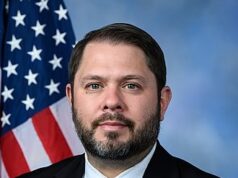Department of the Interior Hosts Stakeholder Workshop on Mitigation Strategy for Large Infrastructure Projects
WASHINGTON, D.C. – June 20, 2013 – (RealEstateRama) — Senior officials from across the federal government convened a high-level workshop today on mitigation for large infrastructure projects. The event, which included participants from federal agencies, states, local governments, tribes, conservation groups and industry, is a part of the Administration’s commitment under the Presidential Memorandum of May 17 to more efficiently permit large infrastructure projects, such as renewable energy and transmission, while achieving improved outcomes for communities and the environment.
Joining Interior’s Deputy Secretary David J. Hayes were Chair of the White House Council on Environmental Quality Nancy Sutley, Deputy Secretary of Transportation John Porcari, Assistant Secretary of the Army for Civil Works Jo-Ellen Darcy, as well as leaders from the U.S. Department of Agriculture, U.S. Environmental Protection Agency, U.S. Bureau of Land Management (BLM), and U.S. Fish and Wildlife Service. The workshop is another step forward in the Administration’s efforts to strengthen mitigation practices for large infrastructure projects, improving predictability for project proponents while achieving greater conservation objectives.
“The efficient permitting of large infrastructure projects – conventional and renewable energy development, transmission lines, pipelines, roadways, and waterways – is central to the President’s vision for an economy that is built to last,” Deputy Secretary Hayes said. “Effective, predictable mitigation for the environmental and cultural impacts of projects is critical to doing this work right, and today’s workshop is an important step in further strengthening the federal government’s mitigation policies and practices.”
As part of today’s workshop, Deputy Secretary Hayes also highlighted the BLM’s recent draft policy on mitigation, which is designed to guide how the BLM will mitigate for impacts from energy development and other projects on Federal lands.
An Instruction Memorandum issued to the agency’s field offices establishes an interim policy for adopting a regional approach to mitigation. Under this approach, the BLM will identify priority mitigation opportunities across the landscape, with a focus on achieving the highest mitigation benefit. This regional mitigation approach will shift the BLM’s focus from determining appropriate mitigation on a permit-by-permit basis, to a strategic and landscape-level perspective, where mitigation can be identified through regional strategies and land use planning.
“Mitigation is critical to the Bureau of Land Management’s ability to effectively implement our unique multiple-use and sustained yield mandate,” said BLM Principal Deputy Director Neil Kornze. “This workshop provided a great opportunity to present our first bureau-wide regional mitigation policy, which puts an emphasis on identifying and investing in landscape-scale conservation priorities.”
The BLM’s Rapid Ecoregional Assessments (REAs) are a potential means for identifying regional mitigation sites. The BLM launched the REA program in 2010 in response to climate change and other widespread environmental influences affecting western landscapes. The assessments are examining ecological values, conditions, and trends within ecoregions, which are large, connected areas that have similar environmental characteristics.
Regional mitigation planning was introduced as a concept as part of BLM’s Western Solar Plan released in 2012, which provided a blueprint for utility-scale solar energy permitting in six western states. In that plan, regional mitigation planning was intended to identify resources that require mitigation based on landscape-level or other ecological, recreation, or socioeconomic objectives.
The interim regional mitigation policy replaces an offsite mitigation policy originally issued in 2005 and takes effect immediately. The BLM plans to review the interim policy for six months, and then issue a final version of the policy.
A longer discussion by Hayes on Interior’s mitigation strategies and how they’ve been used to date is available here.













